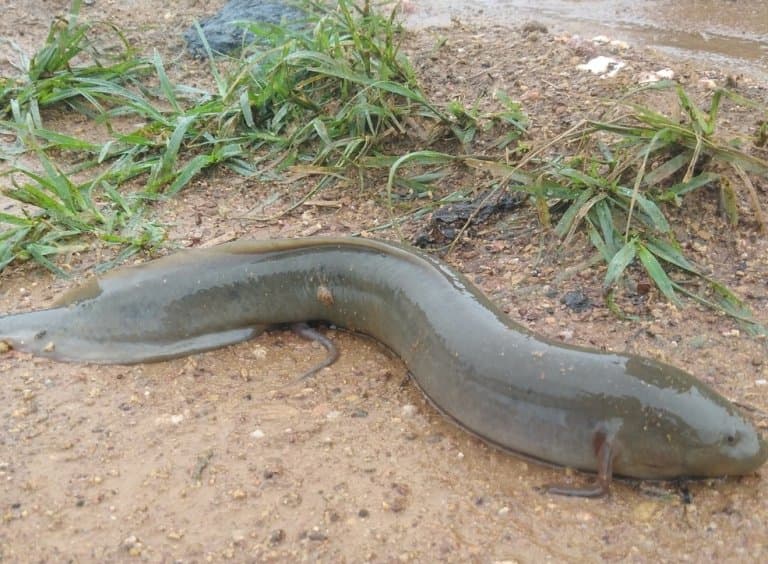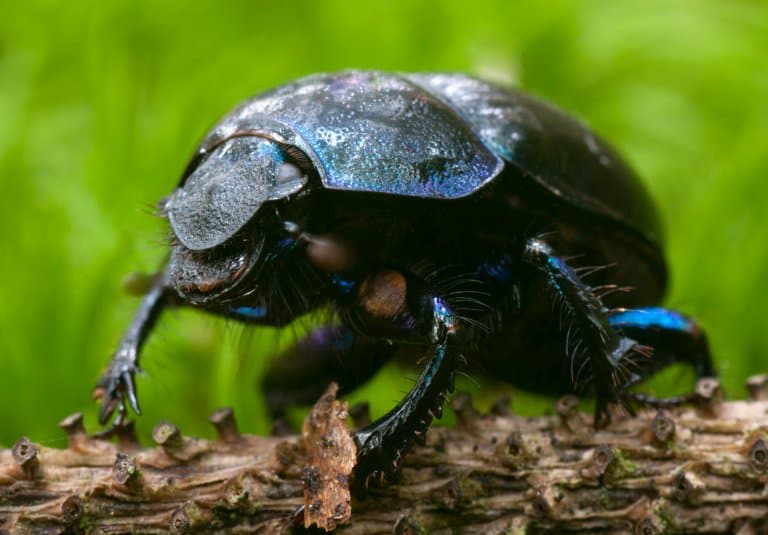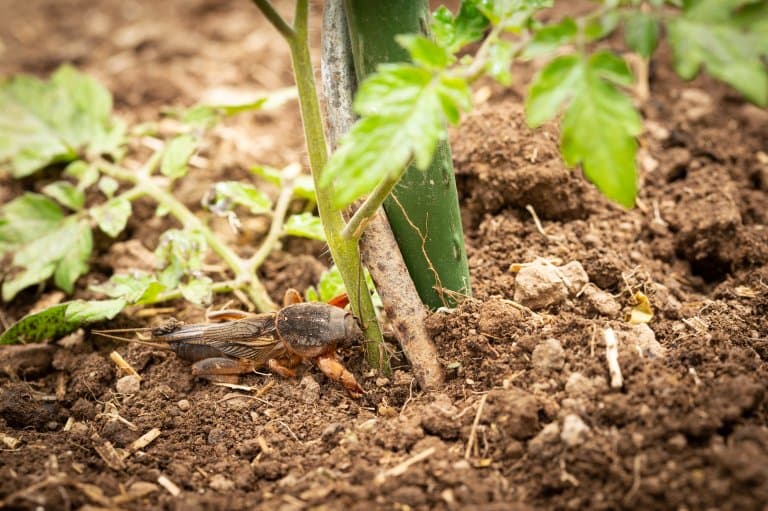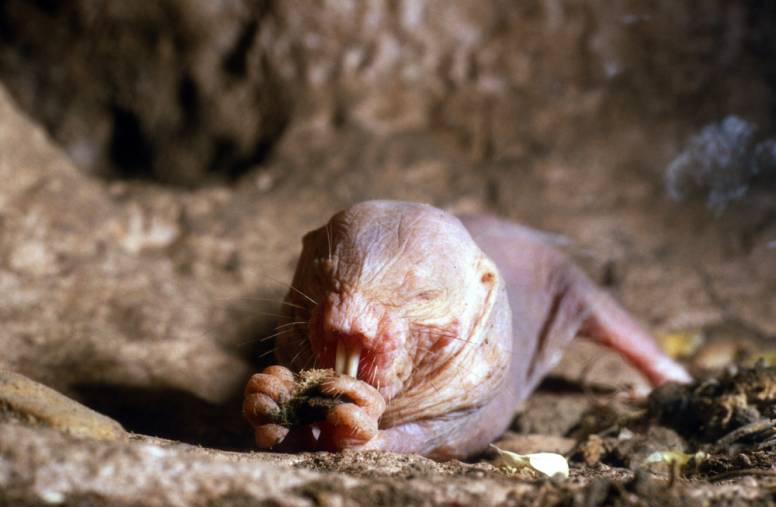Anyone who’s ever made a blanket fort understands the appeal of burrowing. It’s dark, cosy, and creative, and you can make sofa cushion partitions to separate yourself from people you don’t like.
Turns out, other animals have been doing it for ages, and for some of the same reasons. There is a whole domain beneath the soil that we as surface-dwellers aren’t privy to.

Here are ten of the best examples of brilliant burrowing animals.
10. Platypus
Is there really anything about a platypus that’s not strange?
These are possibly the weirdest mammals on Earth: venomous, milk-sweating, duck-looking, ten-chromosome-having, stomachless, egg-laying, flat beavers, who, of course, can swim, detect electricity, and, since they’re on this list, dig burrows.

The platypus burrow is relatively simple, which is why they’re at the low end of the list, but they are, by all accounts, brilliant animals, so that qualifies them entirely.
Despite all their aquatic adaptations, platypuses spend most of their time out of the water, resting in well-dug burrows. They have nesting burrows and camping burrows and will occupy more than ten camping burrows concurrently, switching between them, as-needed.
This gives them a bolt hole throughout their foraging grounds and means they’re never too far from safety. 1
9. West African Lungfish
Another animal carried more by its brilliance than its burrowing prowess is the West African Lungfish, which is about as much of a fish as you are, or I am, or your common dog, cat, budgie or monitor lizard.
All land vertebrates are more closely related to this ‘fish’ than it is to the other branches of ‘fish’ like the bony salmon and trout or the bendy sharks and skates.

One of the key distinctions between the lungfish and other swimming flipper-having non-mammals is the presence of a giant lung (hence the name).
The thing about the particular place in West Africa where this fish lives is that it gets very dry, and fish are well known for preferring things quite wet.
This one, instead of conforming to the needs of its namesakes, stays where it is during the dry season, stubbornly digging in its fins, and encasing itself in mucous to stay slippery. From here it waits, breathing air like your common monitor lizard, until the rains come back and transform its mud back into a lake. 2
8. Dung Beetle
This is the first of our under-appreciated burrowing animals, but there will be more! While most people think of rabbits and moles when they think of burrows, there is a whole branch of the seemingly-infinite beetle lineage responsible for removing your poo.
For the most part, we do a decent job of removing our own poo nowadays, but there are plenty of other large mammals who haven’t got flushing toilets yet, and this plays right into the dung beetles’ six, powerful, burrow-digging hands.

Dung beetles play one of the single most important roles in the entire global ecosystem. They take all that wonderful rectal nutrition and distribute it into the Earth, from whence it came.
They reduce disease, they feed plants, they support intricate microbial communities in the soil, and they’re really strong! The bull-headed dung beetle Onthophagus. taurus can lift 1,141 times its own body weight. 3
7. Rat
Rats have had bad PR since the disease their fleas spread nearly wiped out the human population in the Northern Hemisphere in the 1300s. Even though this has come into question lately there’s no doubt that their reputation is still weakened, and that’s a shame because there’s so much more to the common rat than people give credit for.

Rats are immensely intelligent, up there with chimps and dolphins, and some particularly impressive human people. They have a neocortex, responsible for higher cognition, and a Default Mode Network which is an incredibly complicated, and poorly understood system in the human brain that might play a role in imagination and conscious awareness.
These are sentient, emotional, (mostly) gentle creatures with friends and wants and literally dreams, who deserve much more respect than they get. They can live in colonies in complex burrow systems, each with their own nest chamber, and connecting tunnels in communal nesting. Even domesticated rats still engage in burrowing if given the opportunity! 4
6. Wolf Spider
Wolf spiders are some of the coolest spiders you’ll ever be a lot closer to than you think. These are active hunters, and so can be spotted at night as tiny reflections of light in the grass bouncing off their enormous binocular eyes.
More often than not, it’s the males you’ll see running around, as the females, often much larger, and sometimes up to around 10cm across, prefer to spend more time inside burrows.
They’re recognisable from their unique eye configuration and the way that they will often run around carrying their egg sacks on the dorsal side of their abdomens. When the youngsters hatch, they, too, hitch a ride on their mothers’ backs.
Wolfies have some of the best eyesight in the spider realm, up there with huntsman spiders and the iconic jumping spiders, and it’s likely they are similarly intelligent on account of their dynamic environment.
5. Pangolin
Despite looking very reptilian, pangolins are, in fact, mammals, and cute ones, at that. They dig chambered burrows for sleeping and housing all their scaly babies in, some of which can be big enough for a human to sleep in.
They’re the only mammals covered in from head to toe in what are essentially toenails. Thick, keratinous scales cover this small anteater and have been the cause of all its troubles since some idiot decided he thought they could try to use them to make women produce more breast milk.

For those who struggle with the frustrating and deeply distressing condition of hypogalactia, or milk production that is too low to meet the needs of their infants, this could be a game-changer, if, indeed it worked, which it doesn’t.
Indeed, if it worked, chemists could isolate the active ingredient and manufacture it from something else, saving the poor pangolin. Instead, this rare – and in some species critically endangered – burrower is looking down the end of a Chinese Medicinal barrel. 5
4. Mole Cricket
From the peaceful and shy pangolin, we swing over to one of the loudest animals in the world.
For these burrowing animals, their digging isn’t simply to make a place to sleep or eat, it’s an architectural masterpiece of amplification. The mole cricket digs a burrow that acts as a loudspeaker, from which it can blast its already-noisy call at even more deafening volumes.
This is essentially an exponential horn, similar to the ones Vikings used to tell their kids it’s dinner time and the ones that cows would grow on their heads a bit before that.

It turns out, that straight horns like this (rather than the flared ones you see in brass instruments) are the most efficient at converting the sound energy from high-pressure, low-velocity vibrations produced at the narrow end of the horn, into low-pressure, high-velocity vibrations at its mouth then radiated into the outside air.
And somehow these brilliant burrowing animals! 6
3. Naked Mole Rat
Nudity is always a good way to end up on some kind of list, and the mole rats make it almost to the top of ours.
Despite sounding very much like a garage band from the early ‘90s, these are real animals, and while they’re not rats, they’re at least rodents, which is close enough.
Mole rats are actually related to porcupines, who went the other way with their fur, which makes you wonder if the speciation event that delineated their ancestors came down to a fashion disagreement.

Regardless, mole rats are outstanding creatures, capable of almost entirely avoiding cancer, working as a colony, and creating immense subterranean complexes that put their true namesakes to shame.
As colony animals, they have tasks allocated by their caste. Diggers are followed by sweepers, and the one at the surface, responsible for removing the dirt is responsible for volcanoing, sending 15cm geysers of dirt into the topworld.
So, to say “The mole rat volcanoes at midnight” is not just a cringe-worthy salute between brethren of a dorky website, it’s also a zoological fact.
Mole rats spend their entire lives underground and live in vast mole rat cities that span up to 3km and contain around 80 individuals. 7
2. Termite
Termites are such incredible burrowers that their architectural genius has even inspired human builders to design climate-friendly air conditioning.
Termite mounds are breath-taking feats of colonial collaboration; something we pack animals could only dream of.
Termite mounds can reach eight meters above the ground and can reach down just as far. These monumental structures are built and maintained by millions of termites who design ventilation systems, breeding and living chambers and even farming quarters.
The structures themselves are so well-built they will outlast the colonies, and be inhabited and renovated by several generations in the span of their existence. Inside, they control their own microclimate, down to the heat, humidity and air exchange.
Chimneys and channels work with the surrounding air and sunlight to design an incredibly controlled home for what is essentially a eusocial cockroach family.
1. Ant
It’s impossible to accurately express how amazing ants are. They’ve existed only since the end of the Jurassic, and have dominated the Earth almost ever since.
There are 2.5 million times as many ants on Earth as there are humans, and, like humans, have succeeded in multiplying across all continents except Antarctica.
A single queen ant can breed superpowers; armies of ants in their tens of millions, formidable predators, agriculturalists, pollinators, clean-up crews, and almost everything in between.
Ants are responsible for the longest over-land journeys of any insects, can communicate through smells, navigate using polarised light and build the most exceptional burrows of any animal on the planet.
Underground ant cities can have rubbish pits, farm gardens, highways, and various chambers, all the product of a 40-ton excavation of earth by a colony of small arthropods.
Final Thoughts
That completes our list of incredible burrowing animals. To be fair, both ants and termites deserve to be at the top of this list.
Both share a rivalry that spans over a hundred million years, and both have solved a lot of the same problems in similar ways. So much so, that their bodies and colonies have evolved to be remarkably similar, despite originating from entirely different lines.
Perhaps the most impressive thing about these brilliant burrowing animals is how well-kept their secrets are. Despite living all around us, we’ve only glimpsed the tip of the iceberg, and countless more wonders are going on right now, beneath our feet.
Fact Sources & References
- “Platypus Burrows“, The Australian Platypus Conservancy.
- “West African Lungfish“, National Geographic.
- Lauren Schenkman (2010), “ScienceShot: World’s Strongest Insect“, Science.org.
- Rafał Stryjek et al (2012), “Species Specific Behavioural Patterns (Digging and Swimming) and Reaction to Novel Objects in Wild Type, Wistar, Sprague-Dawley and Brown Norway Rats“, PLOS ONE.
- “What is a pangolin?“, Save Pangolins.
- Yaoko Hayashi et al (2018), “Four types of vibration behaviors in a mole cricket“, PLOS.
- Thomas J. Park and Rochelle Buffenstein (2012), “Digging the Underground Life“, The Scientist.
